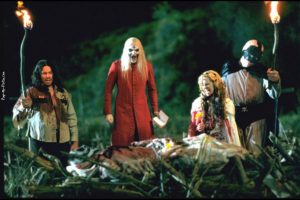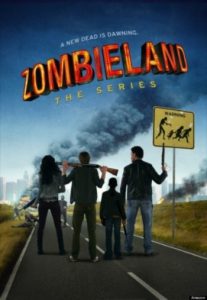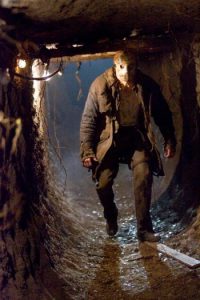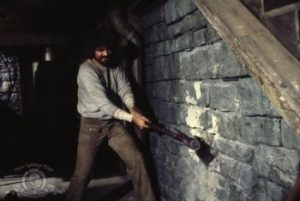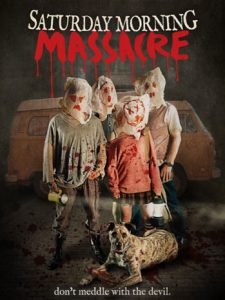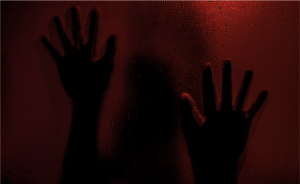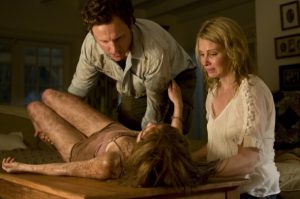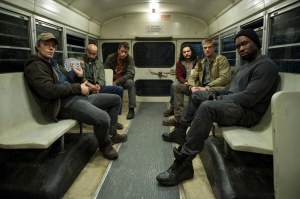
A Horror Education: Night of the Living Dead
I’m an avid movie watcher, but I’m always wanting to discover more about cinema. Over 21 years I’ve seen thousands upon thousands of films. Obviously I have seen plenty of acknowledged classics as, over the past 15 years, I’ve dug into the horror genre, but there are also many that I have missed, largely because I’ve been busy seeking out the more obscure and offbeat end of cinema. However, there are gaps I need to address, so, throughout 2012, I’ll be watching and reviewing 52 acknowledged Horror classics, from throughout the history of the genre (the earliest film on my list comes from 1915, the latest from 2009) in an effort to become a more rounded horror critic.
I hope that, throughout the year, you’ll join me on this trip through the genre, and share your own thoughts on the films I’m seeing.
Night of the Living Dead [’68]
Dir: George A Romero
Why is it on the syllabus?
Because, for some unfathomable reason (actually for an entirely fathomable reason; I didn’t like Romero’s Dawn of the Dead when I first saw it), I’ve never seen this, one of the keystones of the modern horror film. If Psycho invented the slasher film, if Cannibal Holocaust pre-empted the found footage film, this film defined zombie movies, not just for a new audience, not just for its generation, but for the next 40 years and more. It may be the Citizen Kane of the genre; endlessly referenced and parodied, and still influencing people on a daily basis. But is it any good?
What did I learn?
That Night of the Living Dead is not merely a film that people have built on over the years, it’s still every bit as solid as it must have been back in 1968, it’s also still got a lot to say and, if not as shocking as it may once have been (it’s now a 15 in the UK), still feels every bit as groundbreaking as it was.
Night of the Living Dead doesn’t mess around. It opens with Barbara (Judith O’Dea) and her Brother Johnny (Russell Streiner) driving up to a cemetery to put flowers on their Father’s grave. Within minutes, Barbara spots an lumbering old man. Johnny teases her “They’re coming to get you Barbara” before, because this is a horror movie, the old man attacks them both. From there on out the film is pretty much relentless. It deals in suspense and in visceral thrills with equal assurance and impact, and is brilliantly paced. Confining the action to a single location means that, as well as being able to keep costs down, first time director Romero is able to use his undead as an ever present threat, building their presence throughout the film, and use their slow progress towards the characters trapped in a pretty minimally protected isolated house as an omnipresent undercurrent of tension.
Night of the Living Dead is also groundbreaking for the fact that its hero, Ben (Duane Jones) is black. Allegedly this was the first time that a leading character in an American film had been cast as black when his race was not specified in the script, and that’s something that is felt in the film; Ben is defined not by his race (it’s never remarked upon) but by his resolve, by his determination to survive, and to help first Barbara (who finds the house first, running in as she runs from the cemetery) and then the other human characters who appear out of the woodwork. While the film is colour blind, it can’t be denied that Ben’s race does bring an added question and an added poignancy to the film’s final moments. It’s never addressed in dialogue, but one wonders if the same assumptions would be made about Ben in those last moments had the character been white.

As a (somewhat amateurish) film theorist it’s tempting to see Romero’s siege movie in political terms; who are the refugees, who are the zombies? That’s valid, and probably interesting, but frankly I prefer to see it in pure horror movie terms, and on those terms it is an unqualified success. The ten minute sequence of Barbara exploring the deserted house on her own, and the extension of this when Ben arrives on the scene and begins barricading them in so that the approaching Zombies will at least have difficulty getting to them, are a textbook lesson in tension building. The film walks this tightrope assuredly until around the halfway point, when more people, previously unknown to Ben and Barbara, emerge from the cellar of the house. It’s here that Romero and John A Russo’s script becomes really important, creating a believable set of conflicts between the characters and, along with the performances of Jones and Karl Hardman as Harry, a simmering dislike between Ben and one of the new arrivals – again, the question of race, though not raised explicitly, is interesting when it comes to why Harry seems to dislike Ben so intensely.
There are perhaps one or two instances too many of the exchange ‘we should stay up here’ and ‘no, we should go in the basement’, but the focus shifts again soon enough as the film’s last act ramps into real action. Romero isn’t afraid to put likeable characters well in harms way, nor to kill them off, and this also introduces a great deal of tension into the film. Gore is explicit for its time (many close ups of zombies chomping on meat and bones), but it feels reasonably restrained 44 years hence. The best moments are both violent and haunting; a zombified little girl with blood on her, having just eaten her parents; Barbara pulled into a crowd of the undead by her zombified brother as she screams his name, these images and moments linger, as does the final shot of Ben, dead on the floor, victim of a panic that has assumed he’s one of ‘them’ rather than one of ‘us’ (which is where race, again, becomes very interesting).
I could go on, rhapsodise about the crisp 35mm black and white (beautifully rendered on Blu Ray, incidentally), about Judith O’Dea’s credibly traumatised and disconnected performance, about Romero’s pitiless tone, which echoes Johnny’s “they’re coming to get you” warning even as the film’s authority figures tell us “the worst is over”. But I won’t, because we could well be here all day. Overall, Night of the Living Dead deserves every bit of its reputation. After 44 years and countless references parodies and knockoffs it still feels both influential and fresh, it has dated only slightly, and is still scary, tense, and hugely enjoyable. It remains, deservedly, the defining zombie film.
Next Week: Viy

A Horror Education Series ( 3 Articles ) :





![Best Indie Horror Films [ Part 2 ]](https://www.horror-movies.ca/wp-content/uploads/2021/04/absentia-610x343-2-300x169.jpg)
